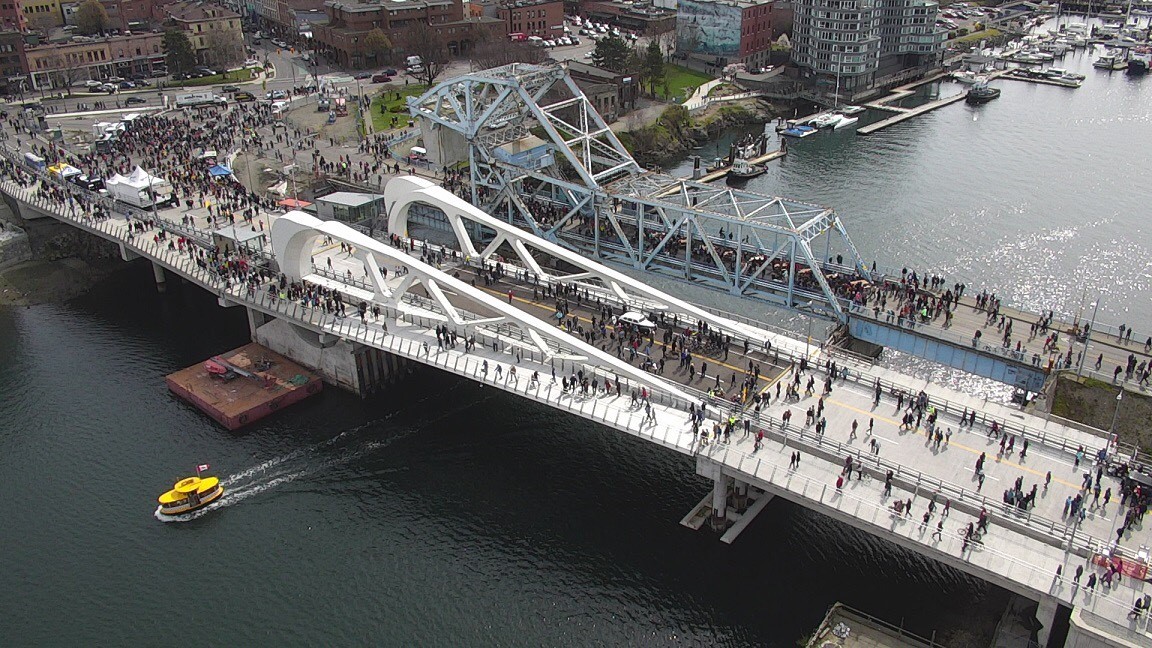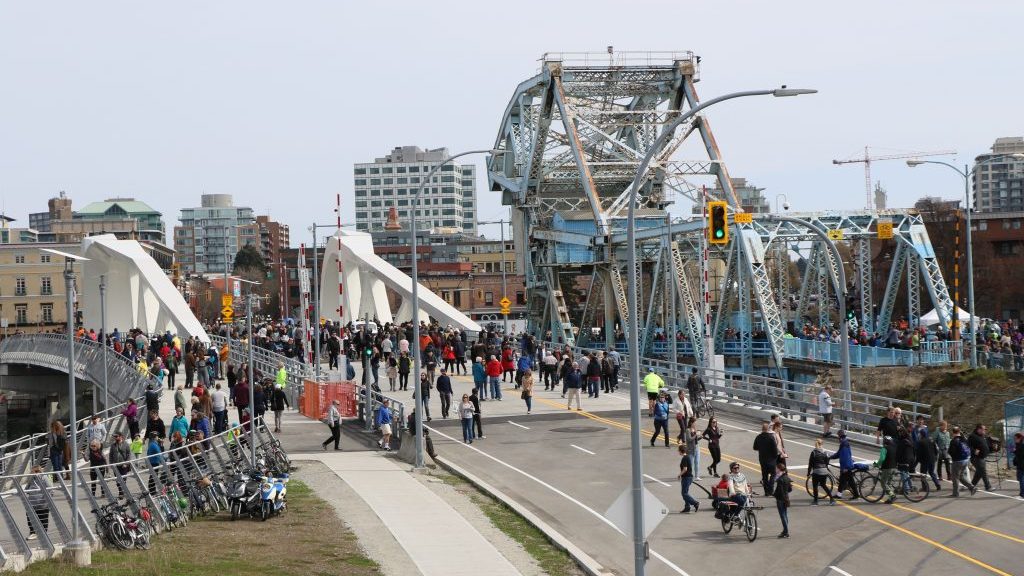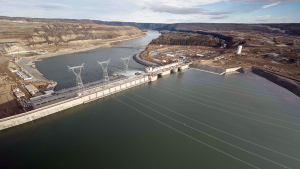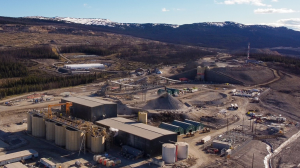After years of stop-and-start, the new Johnson Street Bridge in Victoria has opened.
The span, which crosses the Inner Harbour to connect Victoria and Victoria West, had its official opening on the 2018 Easter long weekend.
“It was a chance for Victorians to say hello to the new bridge and goodbye to the old one,” said Victoria mayor Lisa Helps.
In addition to three lanes for vehicle traffic, the new bridge has on-road bike lanes, a multi-use trail for pedestrians and cyclists and a single-use pedestrian pathway.
The structure is the largest single-leaf bascule bridge in Canada.
A bascule bridge, more commonly known as a drawbridge, is a moveable bridge with a counterweight that continuously balances a span, or leaf, throughout its upward swing to provide clearance for boat traffic.
The bridge is the fourth one at the same location. Its immediate predecessor, which the new span replaces, went into operation in 1924.
“The new bridge is fully seismically-sound,” said Helps. “It will be a lifeline connection between Victoria and the rest of the region in the event that we are hit with an earthquake, something that could take place within the next 50 years.”

The project, whose construction began in 2013, was not without its challenges.
“In the beginning, almost everything connected with the project went wrong,” said Helps. “But in 2015, the city brought in engineer Jonathan Huggett to do an analysis of the project and he got it on track.”
The project has been attracting a lot of attention since 2009 when the City of Victoria decided to replace the Blue Bridge, the structure’s local nickname.
In December 2009, a small but dedicated grassroots group called johnsonstreetbridge.org, which wanted to refurbish the old bridge instead of replacing it, led a petition campaign that forced the city to hold a referendum on the project.
After a majority of voters approved the bridge replacement in 2010, johnsonstreetbridge.org has, in its own words, continued to “monitor the project, file freedom-of-information requests, advocate for greater transparency at City Hall and report upon the project’s achievements, errors and costs.”
On Feb. 8, 2018, Ross Crockford, a director of johnsonstreetbridge.org, and Stan Bartlett, a director of Grumpy Taxpayers of Greater Victoria, co-signed a letter to B.C.’s auditor general for local government, where they asked the office to undertake a performance audit of the bridge project “to provide residents a thorough accounting of what went wrong with it, and to identify risks and best practices that might assist other local governments facing similar big projects in the future.”
In their letter, Bartlett and Crockford said the project would serve as a useful case study for an audit, citing a long list of what they believed to be errors, oversights and missed opportunities.
Whatever its problems, the project should be seen in the context of other public infrastructure projects, said Warren Perks, vice-president and director of industry practices for the BC Construction Association.
“Bridge projects, especially bridge projects with a complex mechanical design, such as the Johnson Street Bridge, have unique challenges that other public infrastructure projects don’t have,” he said. “There are so many unknowns that are difficult to tie down.”
While not commenting on the specific challenges of the Johnson Street Bridge, Maureen Sullivan, president of National Education Consulting Inc., a Victoria-based procurement expert and training organization, said one of the biggest single sources of problems on large public sector projects is a lack of proper planning and due diligence at the early conceptual stages.
“There is often a rush to get to market once the decision to proceed has been made, without adequate time spent assessing the market, considering the full range of options for delivery and build, and ensuring the right project controls and personnel are in place,” Sullivan said.
Often this lack of foresight and planning results in the owner needing to make changes or additions after the project has started, she said.
“That is, of course, detrimental to budgets, timelines and usually to relationships as well,” Sullivan said. “Proper planning really does pay off ten-fold downstream.”
She said the wrong procurement strategy or contract can cause a project to go over budget.
“The projects that are most successful at keeping within budget are those that are performance-based, with a firm maximum budget that bidders are required to commit to,” she said.












Recent Comments
comments for this post are closed